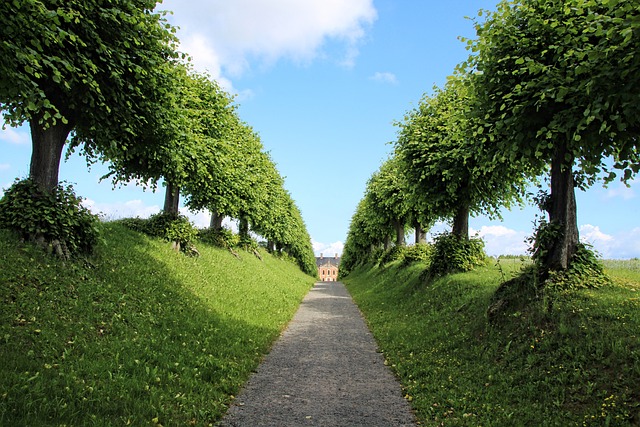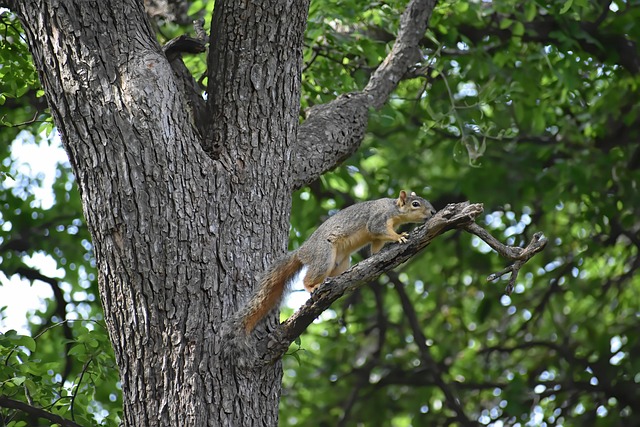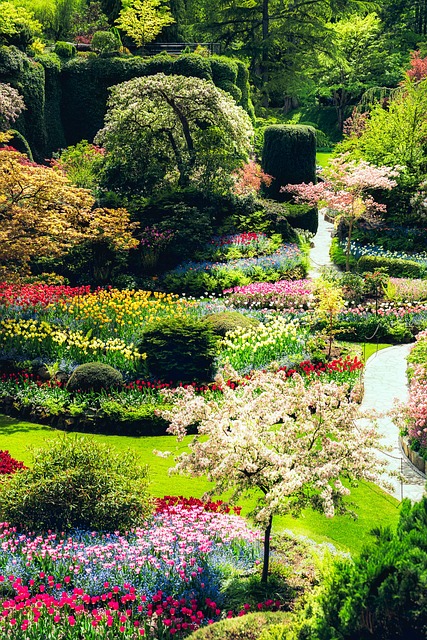The rise of urban botanical gardens transforms cities into greener oases, enhancing aesthetics and fostering community unity. As educational hubs for biodiversity, they offer peaceful retreats, improving mental and physical health. Community gardens, with collective care, cultivate connection, local economies, and sustainable practices through shared growing efforts. These spaces strengthen bonds, promote healthy eating, and build resilient communities while reducing environmental impact.
Community gardens, a vibrant trend in urban areas, are transforming city landscapes into lush oases. These green spaces, often known as urban botanical gardens, offer more than just aesthetic appeal. They provide fresh, locally grown produce, enhancing food security and promoting healthy eating habits. Beyond sustenance, these gardens foster community connection, cultural exchange, and a deeper appreciation for nature. In this article, we explore the multifaceted benefits of community gardens and their role as sustainable environmental anchors.
- The Rise of Urban Botanical Gardens
- Fresh Produce: A Community's Nurtured Bounty
- Health Benefits: Eating Local, Growing Together
- Cultivating Connection: Social Aspects of Garden Spaces
- Sustainable Solutions: Gardens as Environmental Anchors
The Rise of Urban Botanical Gardens

In recent years, there has been a noticeable trend towards the rise of urban botanical gardens. As cities become more densely populated, community spaces that offer greenery and fresh produce have gained prominence. These urban oases not only enhance the aesthetic appeal of neighborhoods but also foster a sense of community among residents. With an increasing awareness of sustainable living and local food systems, botanical gardens are transforming into vibrant hubs where people can grow their own fruits, vegetables, and herbs.
The integration of botanical gardens into urban landscapes provides numerous benefits. They offer educational opportunities for all ages, promoting knowledge about plants, biodiversity, and environmental conservation. Moreover, these green spaces contribute to improved mental and physical health by offering peaceful retreats amidst the hustle and bustle of city life. Community gardens also encourage social interaction, as neighbors gather to tend to their plots and share resources, creating a stronger sense of community.
Fresh Produce: A Community's Nurtured Bounty

In the heart of every thriving community, there often lies a hidden gem—a space where nature and nurturing come together to create a vibrant bounty: community gardens filled with fresh produce. These green oases are not merely beautiful landscapes but powerful tools for fostering connection, promoting health, and strengthening local economies. Like botanical gardens tended by passionate horticulturists, community gardens are nurtured with care and collective effort, ensuring that each plant thrives under the watchful eyes of its dedicated cultivators.
The produce that emerges from these communal efforts is more than just food; it’s a symbol of unity, sustainability, and resilience. Residents come together to plant, tend, and harvest an array of fruits, vegetables, and herbs, enriching their diets with nutrient-rich, locally grown options. This fresh bounty not only enhances the well-being of individuals but also builds a healthier, more resilient community, where neighbors share knowledge, foster friendships, and create lasting memories amidst the lush greenery.
Health Benefits: Eating Local, Growing Together

Eating local and fresh produce from community gardens offers a multitude of health benefits. By growing their own food, residents can enjoy fruits, vegetables, and herbs that are typically fresher and more nutritious than store-bought options. This is because botanic gardens often prioritize organic farming methods, avoiding harmful pesticides and chemicals, which can improve overall dietary quality and contribute to better health outcomes.
Moreover, community gardening fosters a sense of connection and collaboration among neighbors. Growing together promotes social interactions, strengthens community bonds, and creates shared spaces where people can learn about sustainable practices, healthy eating habits, and the joy of cultivating their own food. This collective experience can inspire a more mindful approach to nutrition and encourage a healthier lifestyle for all involved.
Cultivating Connection: Social Aspects of Garden Spaces

Community gardens, with their vibrant displays of fresh produce and lush greenery, serve as more than just oases of tranquility. They foster a sense of connection within neighborhoods, acting as social hubs where people from diverse backgrounds come together. This shared space encourages interaction and builds a stronger community fabric.
In the spirit of botanical gardens, these green sanctuaries cultivate not only plants but also meaningful relationships. Gardeners often form tight-knit bonds while tending to their collective harvest. The act of sharing knowledge, resources, and meals cultivated from the garden strengthens these ties, creating a sense of belonging and mutual support.
Sustainable Solutions: Gardens as Environmental Anchors

Community gardens, with their vibrant blooms and lush produce, serve a dual purpose as both green spaces and sustainable solutions. These urban oases act as environmental anchors, offering a respite from concrete jungles. By cultivating fresh produce locally, community gardens reduce the carbon footprint associated with food transportation, aligning with global sustainability goals.
Unlike traditional botanical gardens focused on scientific study or aesthetic display, community gardens prioritize accessibility and shared benefits. They foster a sense of collective ownership and environmental stewardship, encouraging residents to connect with nature and each other. The diverse flora and fauna supported by these green spaces contribute to local biodiversity, further strengthening the ecosystem’s resilience.














